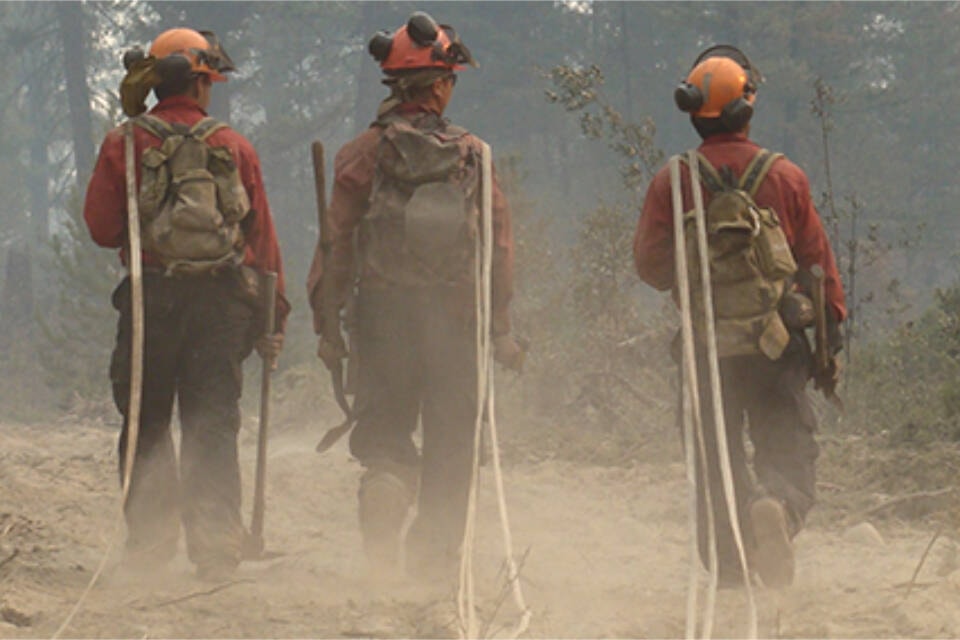While B.C. isn’t yet in the clear for this wildfire season, the BC Wildfire Service’s operations director says the agency is already starting to plan out what the fall and next season could look like.
Cliff Chapman said the organization will continue to invest heavily in prevention and mitigation, but recovery is also a big component. During the provincial wildfire update on Thursday (Aug. 31), Chapman added that he wanted to be clear that the wildfire season is not yet over.
During that update, Emergency Management Minister Bowinn Ma announced the provincial state of emergency would be extended an additional two weeks due to wildfires and the potential worsening drought.
READ MORE: B.C. extends state of emergency by 2 weeks to due wildfires, drought
While the southern half of the province had received some rain during the week, the north was bracing for unseasonably warm temperatures, coupled with strong winds.
After seven days of dry weather and impending winds, Chapman said the next 48 hours would be crucial.
“I just don’t want to lose focus on the fact that the north is not experiencing the same weather that we are experiencing in the south right now.”
But when it comes to the next few months, Chapman said BCWS is looking at a “significant increase in cultural and prescribed fire, trying to eliminate the fuel into the fall but also as we transition into spring 2024.” That will hopefully provide more community protection, while also utilizing fire when crews have more control over it, unlike the challenging conditions in July and August.
Recovery, meanwhile, has “two streams” to it, Chapman noted.
“There’s the actual recovery of the land base, communities that have to obviously go through their recovery process with the devastating impact of wildfires this season, as well as where we put machine guards in and around all of these fires.”
BC Wildfire Service uses heavy equipment to help with responses to larger fires, which can help with the construction of control lines. That equipment expedites guard construction and fuel removal.
He said there is around 3,000 kilometres of machine guard from the organization.
“We need to go and rehabilitate that land, we need to try and get it back to being whole again in some areas. In other areas we’ll leave them as strategic fuel breaks for next season and years to come.”
READ MORE: ‘She was one of us’: BC Wildfire mourns losing one of their own
READ MORE: Muise mourned in Penticton: ‘Thank you for your service, Big Cat Bravo 20’
But this year has also presented other challenges.
Two wildland firefighters died while on duty in the province. Devyn Gale, 19, died near Revelstoke on July 13, while 26-year-old Zak Muise died July 28 near Fort St. John while battling the province’s largest wildfire.
“This fire season has been extremely heavy for the public in B.C., as well as for BC Wildfire Service as an organization.”
Beyond that, there were devastating wildfires in the South Okanagan, specifically in Kelowna, West Kelowna and the Shuswap, that have damaged or destroyed more than 300 properties combined.
READ MORE: ‘Nothing left’: West Kelowna resident reveals shocking wildfire damage
READ MORE: More than 130 properties lost to Bush Creek East wildfire in Columbia Shuswap
There were also challenges around communication in fire-ravaged communities, which Chapman has previously said will also help BCWS learn and adapt for future years.
“We’re trying to actively look at opportunities to get better, to get stronger as an agency so that we can continue to grow and be ready in the face of these fires that continue to present themselves.”
As climate-related emergency hazards are on the rise, he said the wildfire service needs to be “willing to adjust, we need to be willing to evolve, we need to be willing to learn from the things that we’re experiencing right now.”
READ MORE: BC Wildfire officials to look at off-season prevention alongside communities
The second part of the recovery is human-based.
“We will be making sure that our people are looked after, making sure they get the supports they need to reintegrate back to their base jobs as well as making sure they’re available and ready for potential deployments to other hazards that this province may need us for.”
Chapman said that’s something BCWS has been focusing on for the last year by trying to build an organization that “allows us to operate more holistically 12 months of the year.” Crews did help respond to other “hazards” in the spring and he suspects that will be the case come this winter.
Forests Minister Bruce Ralston said at the end of the wildfire season there will be an internal review, “given that this has been a very, very tough season.”
“It’s one that will be scrutinized and reflected upon in order to better plan for the following years.”
But he said the province, in last year’s budget cycle, “dramatically” expanded the number of full-time, year-round employees to assist in planning and developing responses into the future.
That will be looked at again in the next budget cycle “as to whether that worked in the way we wanted or there needs to be further changes there.”
